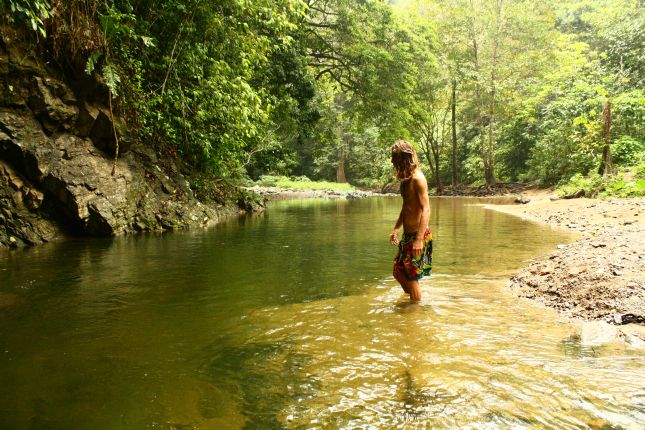
Living in the Jungle : Part 1 – Quebrada Valencia, Colombia
TRIP INFO BOX |
|
| Route | Taganga, Colombia – Quebrada Valencia, Colombia (90) |
| Distance | 53Km |
| Travel Time | 1 Hour |
| Road Conditions | Good tarmac |
| Weather | Hot, sunny |
| Terrain | Hilly coastline, tropical rain forest |
| Food and Petrol | Santa Marta, Palomino |
| Accommodation | Camping, Quebrada Valencia |
We’ve been stuck so long on the Northern coast of Colombia that we’re itching to get going South. There is some attraction to visit the Tayrona national park, but that would mean leaving the bike behind somewhere and carrying our supplies and equipment through the jungle for an hour or more to get to the coastal settlements. And furthermore it’s supposed to be relatively expensive, with a stiff park entry fee and considerable charges for accommodation (about 15000COP for a hammock) and any food and drink bought there – fair enough, perhaps the best way to make sure it stays pristine. It’s supposed to be beautiful, but then, according to the guide books Taganga was also supposed to be. We give it a miss.
UPDATE: We do hear from a number of other travellers further down the line that it is very beautiful indeed.
We’ve been debating in our minds whether we should still go and check out Chez Gloria, the finca in Quebrada Valencia, which we learned about in Venezuela. We promised we would do so – about four weeks earlier though! The thought of a bit of living rough in the rain forest of the Sierra Nevada de Santa Marta National Park is tempting. What the hell, let’s check it out!
This time we get there by day light, so the whole river crossing manoeuvre is easier, though the water level has definitely risen by now. Hopefully we will be able to get back out! The ride into this ravine is almost as magical as it was when we did it during the night – bamboo ‘storks’ the width of my thigh, incredibly tall trees with interesting growths living on them, thick vines hanging across wide spaces.
Gloria is clearly surprised to see us. We said we’d return after a week, but it’s been five weeks now. None the less we’re still welcomed in and we go and set up camp on the clearing under one of the massive trees. This is a beautiful place!
The layout is, as you come off the dirt path following the river, there is a clearing in the jungle. Here is the open-plan kitchen-hut with clay oven and open fire stove, a small working area and adjacent, something resembling a breakfast bar. The building is made of wood and bamboo, some stone flooring, the roof is of some type of grass or palm leaf. There is a clearing behind that with a few upright posts – something waiting to become a building – and another table for drying cacao.
Gloria’s house is at the end of a steep stone path up the hill. Low stone walls and floor, it’s open to the air, with a grass roof. A couple of beds there, space for a few hammocks and a small kitchen in the corner. This is also where the only toilet and shower is.
Gloria, the owner of this finca, is a Colombian lady in her sixties, who spent a number of years in France. She has moved out here permanently – and acclimatized pretty well. I certainly haven’t met any other women of her age who walk almost everywhere bare-footed and can swing a large axe like she can.
Cacao
She runs a little ‘in house’ business (outdoors) here: She bakes organic cookies and cakes to sell to day-tourists that walk by on their way to the waterfall. We’re really fascinated by the process – which introduces us intimately with (arguably) one of the world’s most precious substances… Cacao. (Or you may know it as “Cocoa”)
This mystical tree grows in the tropical climes and produces large pods, which turn shades of yellow and red as they mature. Inside the cacao pod are beans covered in a soft white flesh which can be eaten – kind of like a lychee. The beans themselves are then used to produce many things, butters, creams, powders and drinks, but most popularly that magical brown gold called chocolate!
(Actually, it takes a lot of work to maintain a plantation that will produce high quality cacao. And it’s one of the things the world wouldn’t want to live without – after all, who wants to start the morning without a cup of coffee or go to bed without chocolate for desert? And yet cacao farmers, whom solely exist in a few places like Colombia, Venezuela, West Africa and Indonesia don’t get much in return for their labours – just like the coffee and banana producers of this world I suppose. Strange eh?)
Gloria harvests ripe cacao pods in the jungle – yes, this means another mission with a machete. We eat the delicious flesh and drop the seed into a canvas bag where they ferment a while. She then dries these on her drying table.
Once dry, they are roasted and peeled. The cacao beans are then ground finely and added into the cookie batter, which also contains fresh milk, which Gloria walks an hour every morning to get from the neighbouring farm.
I say “mystical” because a long list of beneficial properties is tied to this plant – including defence against disease and ailments, physical and mental well-being, even aphrodisiacal properties. (Just watch the film Chocolat for an intro;)) And relatively few have the pleasure of having access to it “fresh from the earth”. So we relish this opportunity!
Living in the Rain Forest
Living out here is going back to basics. I mean not quite bushman basics, but about as close as you can get while still affording yourself a few of the most intimate comforts: clean water, a very small grocery store within a half hours walk, and a flushing toilet. No electricity, no gas. Everything else requires human effort.
To cook you need fire. And to make fire you need wood. Wood comes from fallen trees in the rain forest. Finding dead trees in the rain forest requires good boots, a machete, an axe, preferable a saw, decent sense of orientation, high tolerance for large insects and good tolerance for mosquito bites (your repellent will only be so helpful).
The machete is used to clear a path through the thicket until you find your tree. Chances are that this will be on a steep slope somewhere, so watch your step. Then use a combination of axe, saw and machete to divide the trunk into a number of manageable sections, about one to 1 1/2 metres long. Then convey them back down the path you entered by towards the camp. Some good gloves would be recommendable.
Well done, you deserve a break. As fires go, particularly under the jungle canopy, where things never really dry out completely, you will need kindling to catch flame, small pieces of wood to put on top of that and some larger pieces for general burning. Start by using the axe to beat the wood you just brought from the jungle until it splits into smaller pieces. (If you’re not sure how, watch Gloria.) The machete should be helpful to make the kindling. It would be smart as well as courteous to chop enough to last the whole day or more. (By the way, never strike a machete on stone as it disrupts its delicate balance, making it a pain to use.)
Excellent, now let’s get a fire going. Anyone volunteering to cook lunch?
What do we have to eat? Gloria’s been on a mission through the forest herself and has brought back a few avocados, a mango and some cacao. That’s a good start, but someone will have to go for a walk to the store and get some rice and things – DON’T FORGET THE BEER! See you in an hour or two.
We generally use shopping trips as an opportunity to spend an hour or two away from the finca, and sit down at the little tienda to drink beer and listen to music. It’s a welcome break from being under the canopy.
Yes, so, life is pretty bare out here but also very beautiful. There’s a reason this place has been declared a national park, and in fact this is an ecosystem so small and unique that it could very easily be destroyed. Therefore it is imperative that whoever goes there treats it with respect. (I sincerely hope that electricity, gas and guest houses never see the light of day here, because the more comforts, the more people, and the more people, the more waste and destruction.) There are actually various indigenous communities living within this area, some of them remnants of the Tayrona culture which was all but wiped out during Spanish colonization.
Gloria accepts a small number of people to stay here at Chez Gloria and enjoy the unique surroundings, in exchange for helping her maintain the daily running of the place. The primary ways to contribute are to bring food from the store or neighbouring villages, to cook meals, to clean up, and of course to collecting and chopping wood, and carrying rubbish out of the Finca.
Other than that there is gardening and construction jobs, depending on what is currently going on. Ask Gloria and she will surely point you in the right direction. And if you feel the initiative to do or make something that’ll benefit the place, speak to her about it.
The main attraction up here, which brings in quite a few day-tourists walking by, is the waterfall about 20 minutes walk further into the ravine. It’s spectacular! It’s a rocky cascade, easily 100 metres tall, with water splashing down from one rock pool into the next, all of which you can swim in. The final pool is at the bottom, already covered by the forest canopy, and from here on flows the river, out towards the sea.
The sea is also under an hours walk from the Finca. You have to walk past a few other coconut and cattle farms to get there, and you come out at a long beach, beautiful and isolated. There are a number of surfing lodges and such, further along the beach, but during our visit there were no more than two people to be seen here aside from ourselves. And they serve as a good place to get a refreshment if you haven’t brought anything.
Back at the ranch, if you want to wash after a hard day’s work, there are two options:
1 the shower in Gloria’s bungalow
2 the river – a lovely, refreshing option (DON’T use any soaps because it’s alive with thousands of little fish and river shrimp)
The only other running water is in a long hose which catches its contents from a spring further up the mountain and beings it near the kitchen area for cooking and washing of equipment.
We spend two weeks out here during this visit. It’s hard going but we love it. Miriam, a lovely French girl, is staying here at the moment too – she’s very skilled with her hands and she loves getting them dirty, so we get along really well.
The most difficult thing is getting some sort of arrangement going that someone takes care of getting food and cooking meals. It’s really tough and annoying when you’ve worked your ass off all morning and you’re looking forward to lunch, but there isn’t any food and nobody’s been to get any. Then you can take an hours walk to get food and go through the whole fire making and cooking process – not fun.
It’s far easier to cook for everyone, because with the single kitchen, effort involved, and limited firewood which will need to be replenished before you know it, it’s not realistic everybody doing their own thing. So if you’ve got a good group together and everybody shares in the work, life on the finca is good fun.
Which reminds me – ultimate jungle breakfast: fried platano (plantane) and spring onion in scrambled egg, cubed fresh mango on the side. Try it!
There are a couple of other short-term visitors that pop by for a day or two but except for one Spanish chap who does lend a strong hand, we don’t see too much of the others.
Some local snacks sold down the road…
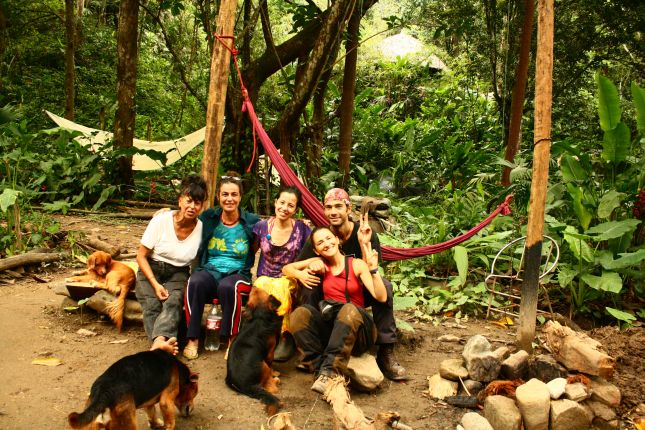
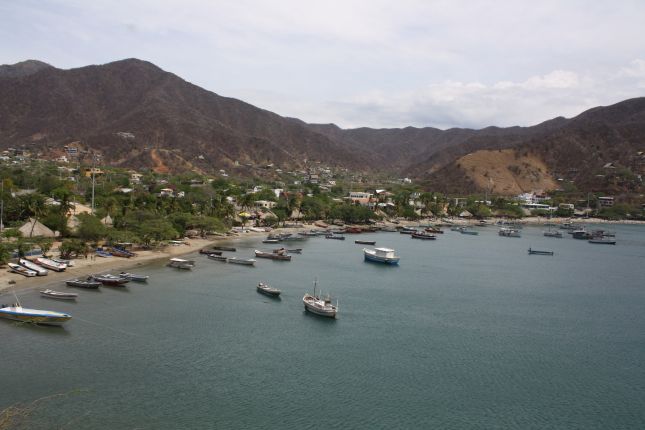
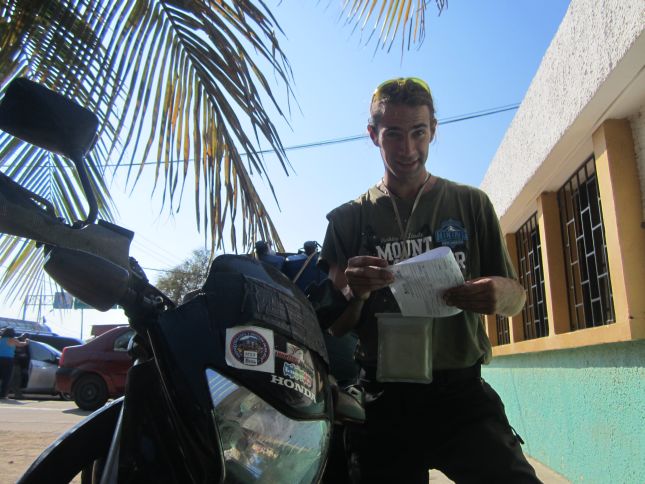
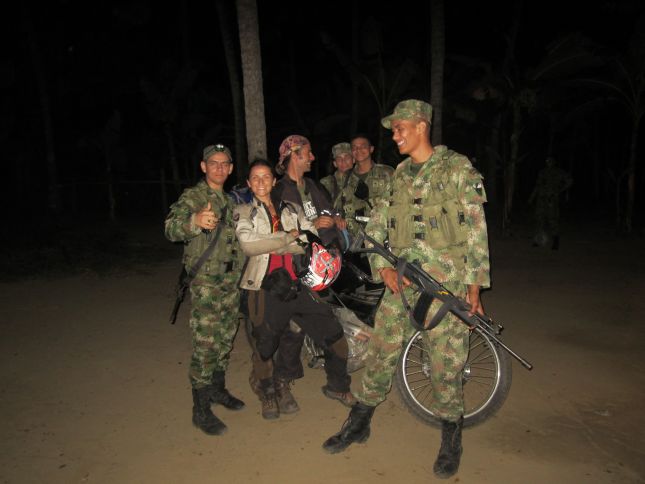
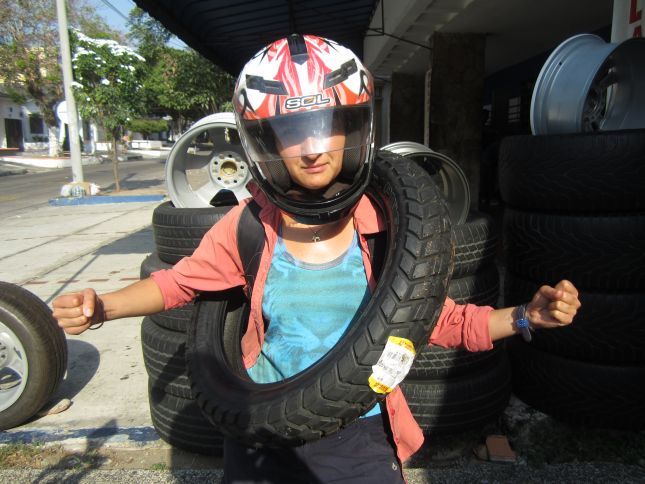
2 Comments
Pingback:
Escape Hunter
Very interesting photos of an exciting adventure!
But them crawling “things” sure can be dangerous…